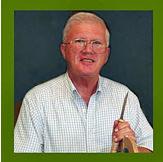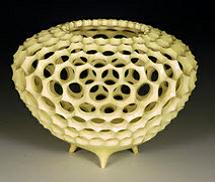[note]The following is a message from AAW Vice President Cassandra Speier[/note]
 Since becoming a member of the AAW Board I have had many fine experiences, which include attending several of the Regional Symposiums. All have been enjoyable, entertaining, great learning experiences and wonderful places to make new friends. I most recently had the great honor to attend the Irish Woodturners Guild Symposium held in Killarney, Ireland. I was joined by my husband, Bob, Skip Wilbur, President of our local woodturning club-MidSouth Woodturners Guild and his wife, Connie, and Mike and Terry Maffitt, also both MSWG Board Members. The symposium was attended by 200+ people and what a group it was. We were so warmly welcomed that soon it was as if we were all old friends. We had so many offers for dinners, tours and suggestions for day trips that if we had stayed on for a month we could not have done it all! The demonstrators were Irish, English, European and American turners and provided a mix of studies that were very diverse yet enhanced one another.
Since becoming a member of the AAW Board I have had many fine experiences, which include attending several of the Regional Symposiums. All have been enjoyable, entertaining, great learning experiences and wonderful places to make new friends. I most recently had the great honor to attend the Irish Woodturners Guild Symposium held in Killarney, Ireland. I was joined by my husband, Bob, Skip Wilbur, President of our local woodturning club-MidSouth Woodturners Guild and his wife, Connie, and Mike and Terry Maffitt, also both MSWG Board Members. The symposium was attended by 200+ people and what a group it was. We were so warmly welcomed that soon it was as if we were all old friends. We had so many offers for dinners, tours and suggestions for day trips that if we had stayed on for a month we could not have done it all! The demonstrators were Irish, English, European and American turners and provided a mix of studies that were very diverse yet enhanced one another.
There was Gary Mercham out in the lobby, turning on his pole lathe and providing instruction on how to build Windsor Chairs using seat joinery. Christien Van Bussel turning small bowls and platters and incorporating the use of color. Dick Sing was on hand from the US with his usual charm and wit turning small crafts objects. Tom McCosh showed off his skills turning an amazing square box with a beautiful finial. Bill Robinson was there demonstrating segmented turnings. Gary Rance entertained the audience and turned projects like lidded boxes with finials. Lastly was Glenn Lucas demonstrating his skills in turning bowls and platters with his usual grace and efficiency, but it was his sharpening demonstration that for me was the highlight of the symposium.
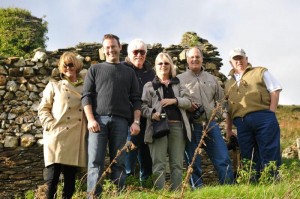 We spent another 4 days sightseeing around the country and truly beautiful it was. And just to make it more exciting, we rented a mini-van with the driving wheel on the right side, gear lever on the left of that, an inexperienced European driver at the wheel, and three people with road maps navigating-it was pretty exciting.
We spent another 4 days sightseeing around the country and truly beautiful it was. And just to make it more exciting, we rented a mini-van with the driving wheel on the right side, gear lever on the left of that, an inexperienced European driver at the wheel, and three people with road maps navigating-it was pretty exciting.
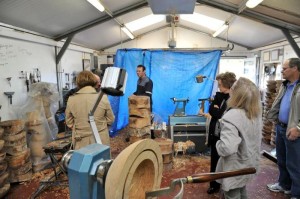 We got a chance to visit with Glenn at his home and workshop in Carlow. Glenn, always gracious and generous with his time, left his work early and gave us a tour of his workshop. His shop was a large building separate from his house with plenty of natural light from ceiling skylights. A large garage door on one side of the shop also provided natural light as well as fresh country air. Glenn explained the process of receiving timber from the mill, band sawing, roughing and coring, kiln drying, finish turning and finishing. By that afternoon Glenn and his assistant had cored and roughed turned 120 bowls (Beech) in the 15-inch diameter size. Glenn is truly an efficiency engineer. On the wall of his shop are the signatures of many well-named woodturners who have visited him, names we would all recognize. From Glenn’s shop we took a short scenic trip up a high hillside for a photo op of the countryside.
We got a chance to visit with Glenn at his home and workshop in Carlow. Glenn, always gracious and generous with his time, left his work early and gave us a tour of his workshop. His shop was a large building separate from his house with plenty of natural light from ceiling skylights. A large garage door on one side of the shop also provided natural light as well as fresh country air. Glenn explained the process of receiving timber from the mill, band sawing, roughing and coring, kiln drying, finish turning and finishing. By that afternoon Glenn and his assistant had cored and roughed turned 120 bowls (Beech) in the 15-inch diameter size. Glenn is truly an efficiency engineer. On the wall of his shop are the signatures of many well-named woodturners who have visited him, names we would all recognize. From Glenn’s shop we took a short scenic trip up a high hillside for a photo op of the countryside.
After our scenic trip, Glenn’s wife Cornelia treated us to a dinner of Irish stew and baked potatoes with a freshly made apple cake for dessert. What a fabulous day and evening. The entire trip was a fabulous adventure and one that the turners from the US will never forget. We made new friends across the pond who will be remembered forever.
Our trip was a great example of woodturners sharing their techniques with their peers and others interested in woodturning. This attitude of sharing is pervasive though the entire community and our organization. It promotes public interest and understanding in viewing and creating lathe-turned art. The AAW is truly an international organization and I am impressed with the scope of our accomplishments.
Cassandra Speier,
Vice President American Association of Woodturners
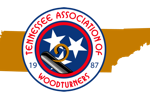 The Tennessee Association of Woodturners is holding their 24th annual symposium January 27th and 28th at the Radisson Hotel at Opryland in Nashville, Tennessee. Demonstrators include Al Stirt, Dale Larson, Jennifer Shirley, Ashlyt Harwood and Mark Gardner. Registration fee for the symposium is $145 and includes the demonstrations, instant gallery, roundtable discussion with the demonstrators and the banquet and auction. More information at http://tnwoodturners.org/symposium/.
The Tennessee Association of Woodturners is holding their 24th annual symposium January 27th and 28th at the Radisson Hotel at Opryland in Nashville, Tennessee. Demonstrators include Al Stirt, Dale Larson, Jennifer Shirley, Ashlyt Harwood and Mark Gardner. Registration fee for the symposium is $145 and includes the demonstrations, instant gallery, roundtable discussion with the demonstrators and the banquet and auction. More information at http://tnwoodturners.org/symposium/. The Florida Woodturning Symposium is scheduled for February 3-5, 2012 at the Lake Yale Baptist Conference Center North of Eustis, Florida. This symposium is coordinated by seven AAW chapters. Demonstrators on the schedule include Tim Yoder, host and producer of Woodturning Workshop seen on public television stations, Norm Rose, Donald Derry and Dick Sing. Fee for the symposium is $125 which includes access to the demonstrations, instant gallery and trade show. There are additional hands-on workshops for an additional fee. Hotel and RV sites are available nearby. More information at http://floridawoodturningsymposium.com.
The Florida Woodturning Symposium is scheduled for February 3-5, 2012 at the Lake Yale Baptist Conference Center North of Eustis, Florida. This symposium is coordinated by seven AAW chapters. Demonstrators on the schedule include Tim Yoder, host and producer of Woodturning Workshop seen on public television stations, Norm Rose, Donald Derry and Dick Sing. Fee for the symposium is $125 which includes access to the demonstrations, instant gallery and trade show. There are additional hands-on workshops for an additional fee. Hotel and RV sites are available nearby. More information at http://floridawoodturningsymposium.com.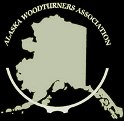 The Alaska Woodturners Association is holding their 8th annual symposium on January 28th and 29th in Anchorage. Featured demonstrators are Eli Avisera and Jimmy Clewes. They will also have two local woodturning demonstrators. Cost is $100 for both days if paid in advance or $120 if paid at the door. You can get more information at http://www.akwoodturners.org/Symposium.html
The Alaska Woodturners Association is holding their 8th annual symposium on January 28th and 29th in Anchorage. Featured demonstrators are Eli Avisera and Jimmy Clewes. They will also have two local woodturning demonstrators. Cost is $100 for both days if paid in advance or $120 if paid at the door. You can get more information at http://www.akwoodturners.org/Symposium.html 





